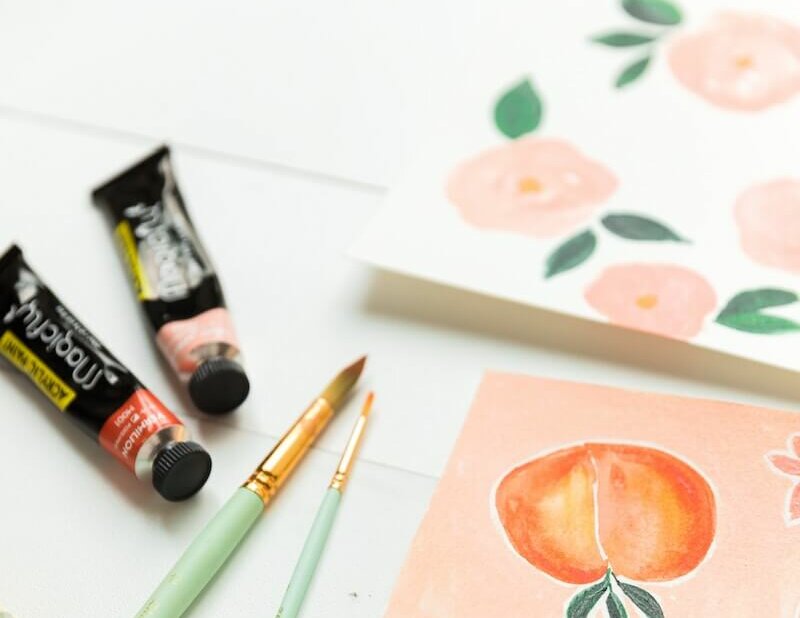Watercolor paint tubes are a versatile and convenient medium for artists of all skill levels. Unlike traditional watercolor pans, which are dry and require water to activate, watercolor tubes contain wet paint that can be squeezed out onto a palette or directly onto paper, this makes them ideal for artists who prefer a more fluid painting style. This guide will introduce you to the world of watercolor paint tubes, including the benefits of using tubes, how to use them, and tips for achieving stunning results.

Benefits of Using Watercolor Paint Tubes
There are several benefits to using watercolor paint tubes, including:
- Richer colors: Watercolor tubes contain more pigment than pans or pencils, which means that the colors are more vibrant and intense.
- Longer-lasting: Because watercolor tubes are moist, they stay fresh for longer periods of time and can be reactivated with water if they start to dry out.
- Greater control: Because you can squeeze out as much or as little paint as you need, watercolor tubes give you more control over the amount of pigment you use.
- Better for large projects: If you’re working on a large project, watercolor tubes are more convenient because you can easily squeeze out enough paint to cover a large area.
How to Use Watercolor Paint Tubes
Using watercolor tubes is relatively easy, but there are a few things to keep in mind. Here’s a step-by-step guide:
- Squeeze out a small amount of paint onto a palette.
- Add a few drops of water to the paint and mix it together with a brush or palette knife.
- Test the color on a scrap piece of paper to make sure it’s the shade you want.
- Apply the paint to your paper with a brush, using light, sweeping strokes.
- Continue adding layers of color until you achieve the desired effect
Tip: Don't leave your paint tubes uncapped: Leaving your paint tubes uncapped can cause the paint to dry out and become unusable.
Techniques for Achieving Stunning Results
Watercolor tubes are incredibly versatile and can be used to achieve a wide range of effects. Here are a few techniques to try:
- Wet-on-wet: Wet the paper with clean water and then apply wet paint to the wet paper. This technique creates a soft, blended effect.
- Dry brush: Load your brush with very little paint and apply it to dry paper. This technique creates a scratchy, textured effect.
- Glazing: Apply a thin layer of transparent paint over a dried layer of paint. This technique creates depth and luminosity.
Tips for Using Watercolor Paint Tubes
Here are a few tips to keep in mind when using watercolor tubes:
- Use good quality paper: Watercolor paper is designed to absorb water and prevent the paint from bleeding or smudging.
- Start light: It’s easier to add more color than to take it away, so start with a light wash and build up the color gradually.
- Experiment with different brushes: Different brushes can create different effects. Try using a flat brush for large areas and a round brush for details.
- Clean your brushes regularly: Watercolor paint can be hard on brushes, so make sure to clean them thoroughly after each use.
Don't mix too much paint at once: Mixing too much paint at once can cause it to dry out before you have a chance to use it.
Watercolor Tubes vs. Pans and Pencils
Watercolor tubes are just one of several types of watercolor paint available. Here’s how they compare to pans and pencils:
- Watercolor pans: Watercolor pans are dried paint that can be activated with water. They’re convenient for outdoor painting or traveling, but they don’t have the same vibrancy or staying power as watercolor tubes.
- Watercolor pencils: Watercolor pencils are similar to regular colored pencils but can be activated with water to create a watercolor effect. They’re great for adding details to a painting, but they don’t have the same fluidity or intensity as watercolor tubes.
- Watercolor tubes: Watercolor tubes contain wet paint that can be squeezed out onto a palette or directly onto paper. They have the richest colors, longest lifespan, and greatest control of the three options.
Are watercolor tubes more expensive than pans or pencils?
Yes, watercolor tubes are typically more expensive than pans or pencils because they contain more pigment.
Can watercolor tubes be used on any type of paper?
Watercolor tubes are best used on watercolor paper, but they can also be used on other absorbent surfaces like sketch paper or mixed media paper.
Do I need to mix water with the paint before using it?
Yes, watercolor tubes need to be mixed with water before use to achieve the right consistency.
Can I use watercolor tubes for calligraphy or lettering?
Yes, watercolor tubes can be used for calligraphy or lettering, but it’s important to use a brush with a fine tip.
